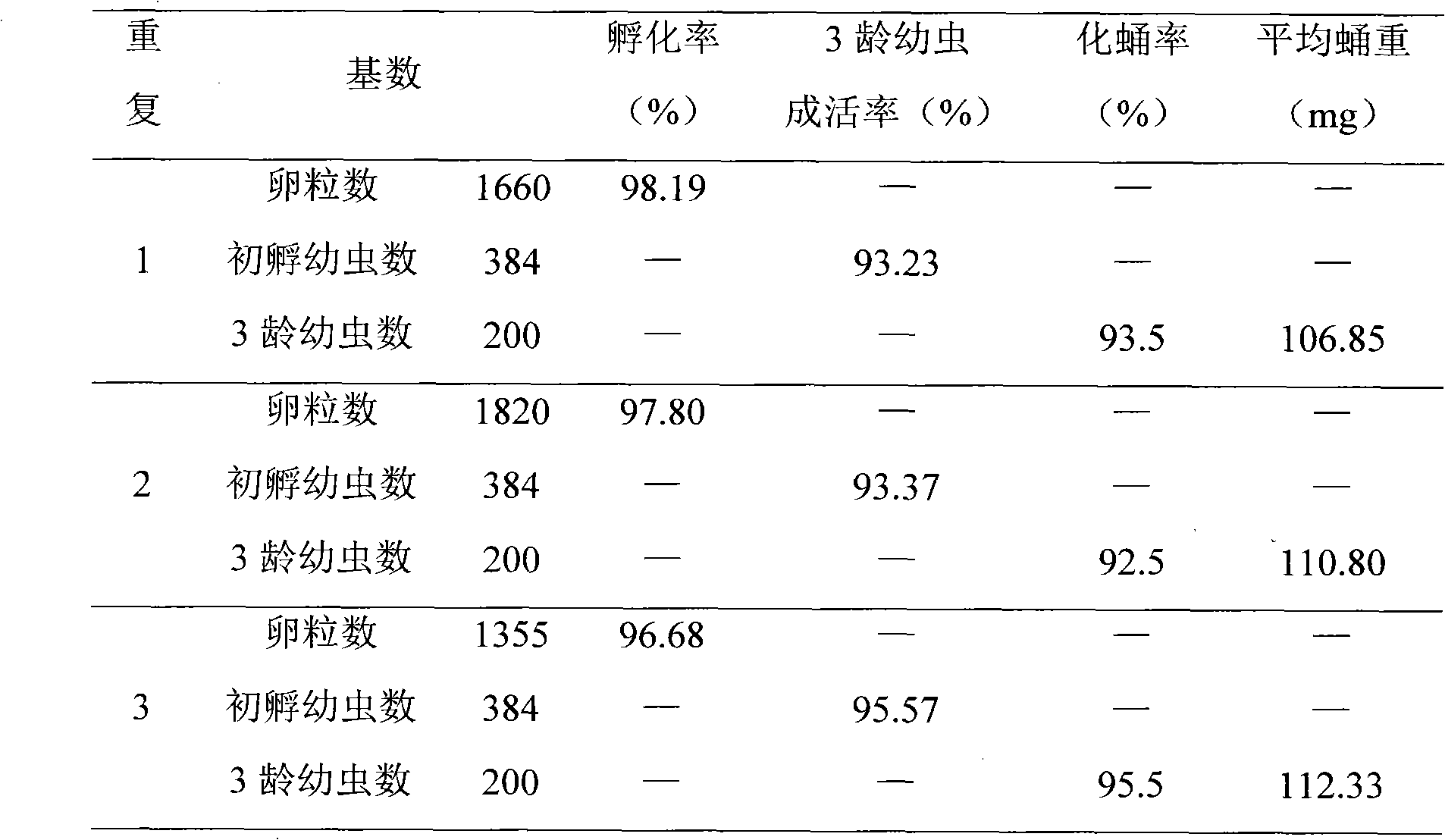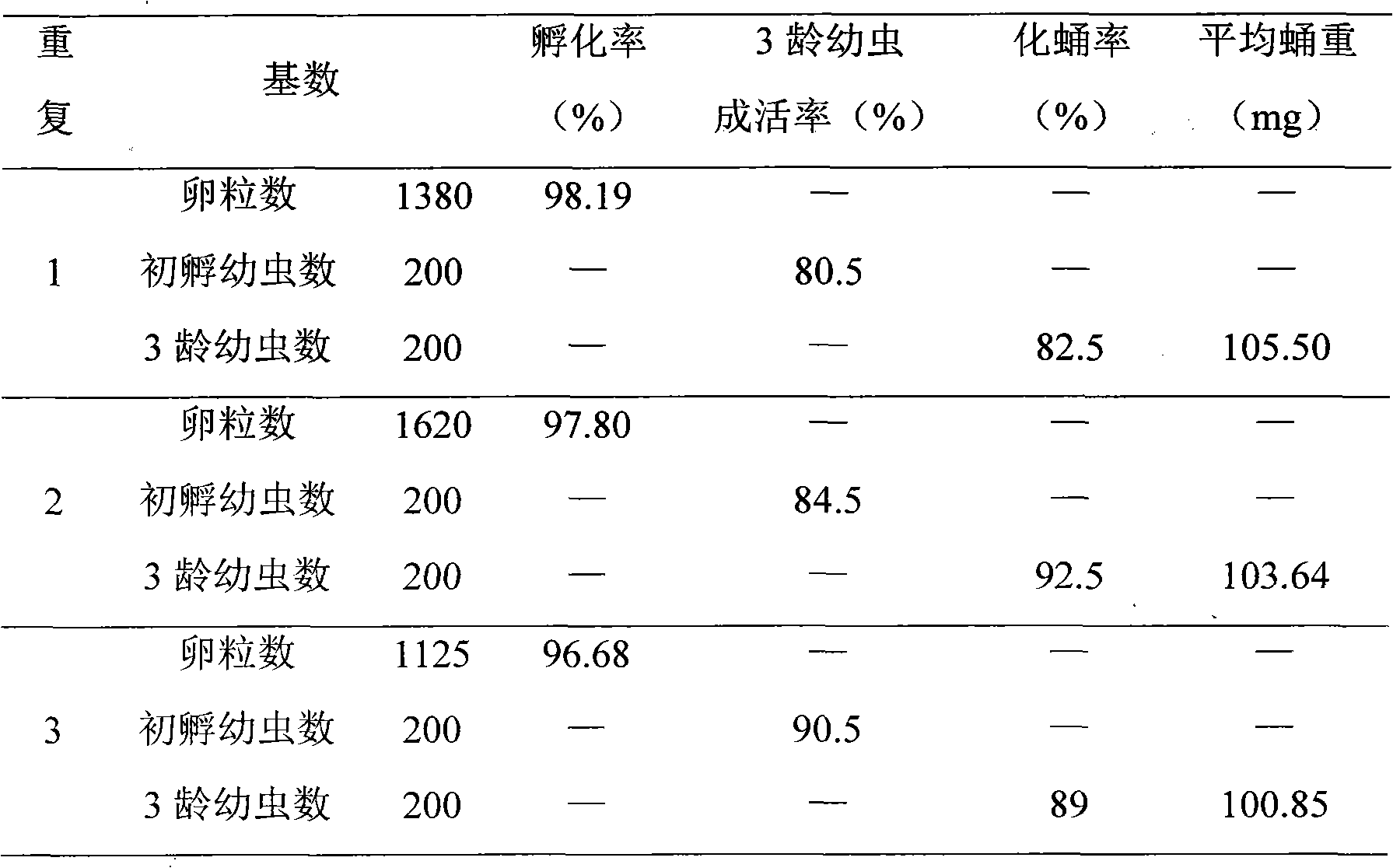Artificial rearing method of larvae of beet armyworm
A beet armyworm and artificial feed technology, applied in the direction of animal husbandry and the like, can solve the problems of low pupation rate and pupa weight, low larval survival rate, low reliability of research results, etc., and achieves simple feeding method and larval survival rate. High, overcoming high mortality effect
- Summary
- Abstract
- Description
- Claims
- Application Information
AI Technical Summary
Problems solved by technology
Method used
Image
Examples
Embodiment 1
[0016] Example 1: about 200 beet armyworm egg masses collected from the green onion field in Zhangqiu, Shandong in 2009 were raised indoors with the method of the present invention.
[0017] (1) After the eggs are sterilized, they are placed in an incubation tank, and fresh cabbage leaves are placed in the tank. Finally, 153 newly hatched larvae were obtained, and the hatching rate was 76.50%.
[0018] (2) Take 96 newly hatched larvae hatched on the same day, and insert them into the 24-hole insect culture plate; artificial feed is housed in the 24-hole insect culture plate, and 4 newly hatched larvae in each hole are raised to the 3rd instar 92 larvae were obtained, and the survival rate of the 3rd instar larvae was 95.83%.
[0019] (3) Randomly select 50 larvae of the 3rd instar of Spodoptera exigua, transfer to the flat-bottomed glass finger tube, artificial feed is housed in the finger tube, 2 larvae in every tube, raise to pupation, the number of pupation is 47, The pup...
Embodiment 2
[0021] Embodiment 2: Take the beet armyworm eggs obtained by subculture feeding as experimental materials, and raise them according to the method of the present invention. Assuming reference to the rearing method: fresh young cabbage leaves are not placed during the hatching process of the eggs, and the newly hatched larvae are transferred to flat-bottomed glass finger tubes and raised to pupate, and other details are the same as the present invention. Both feeding methods were set up with 3 replicates.
[0022] (1) The rearing method of the present invention: get the egg mass of the same day and place it in the hatching tank after being sterilized, place fresh cabbage leaves in the tank, count and obtain the number of newly hatched larvae, and calculate the hatching rate; choose the newly hatched larvae hatched on the same day, In the 24-hole insect culture plate, artificial feed is housed in the 24-hole insect culture plate, 4 newly hatched larvae in each hole, the 3rd insta...
PUM
 Login to View More
Login to View More Abstract
Description
Claims
Application Information
 Login to View More
Login to View More - R&D
- Intellectual Property
- Life Sciences
- Materials
- Tech Scout
- Unparalleled Data Quality
- Higher Quality Content
- 60% Fewer Hallucinations
Browse by: Latest US Patents, China's latest patents, Technical Efficacy Thesaurus, Application Domain, Technology Topic, Popular Technical Reports.
© 2025 PatSnap. All rights reserved.Legal|Privacy policy|Modern Slavery Act Transparency Statement|Sitemap|About US| Contact US: help@patsnap.com


